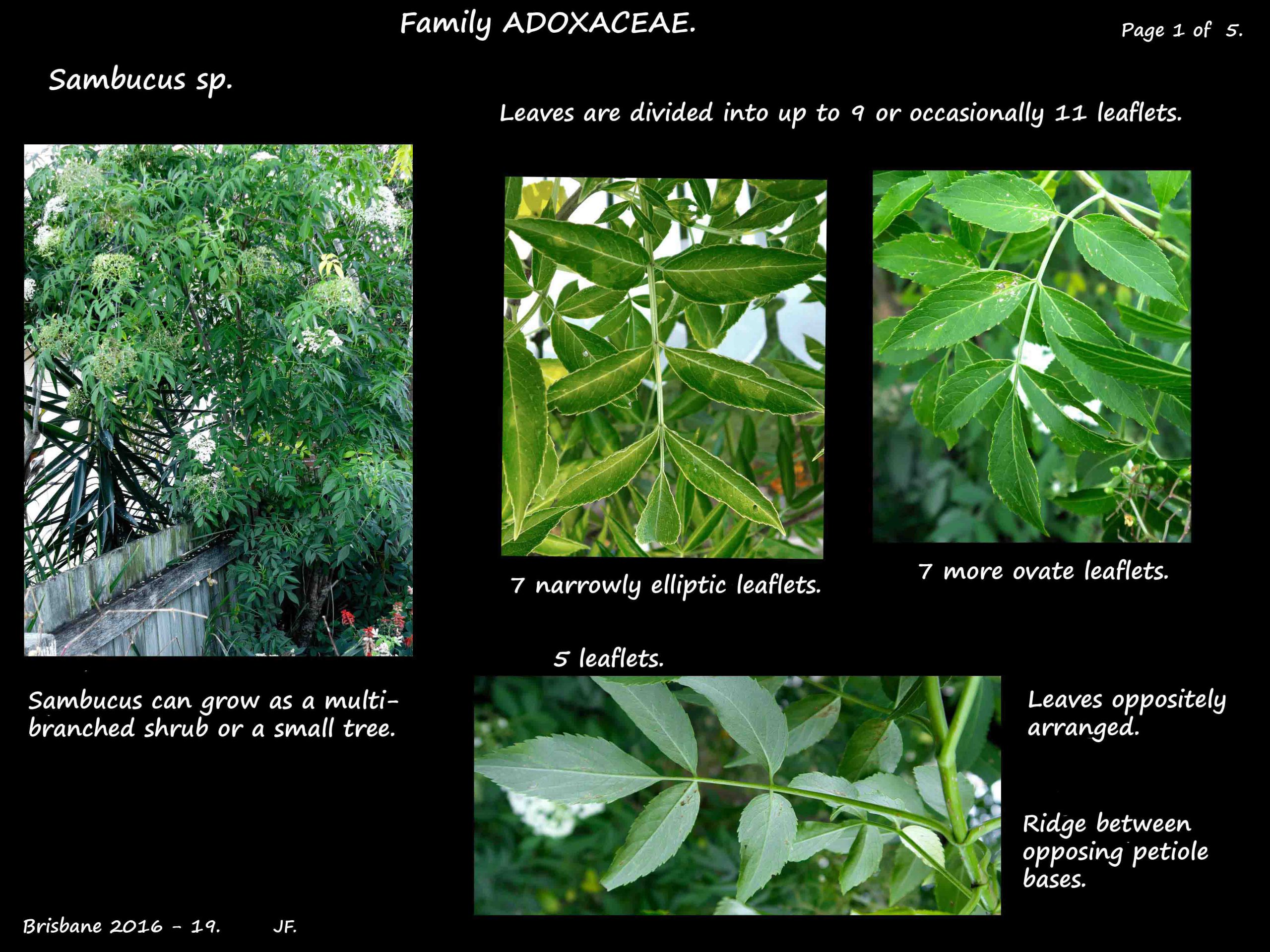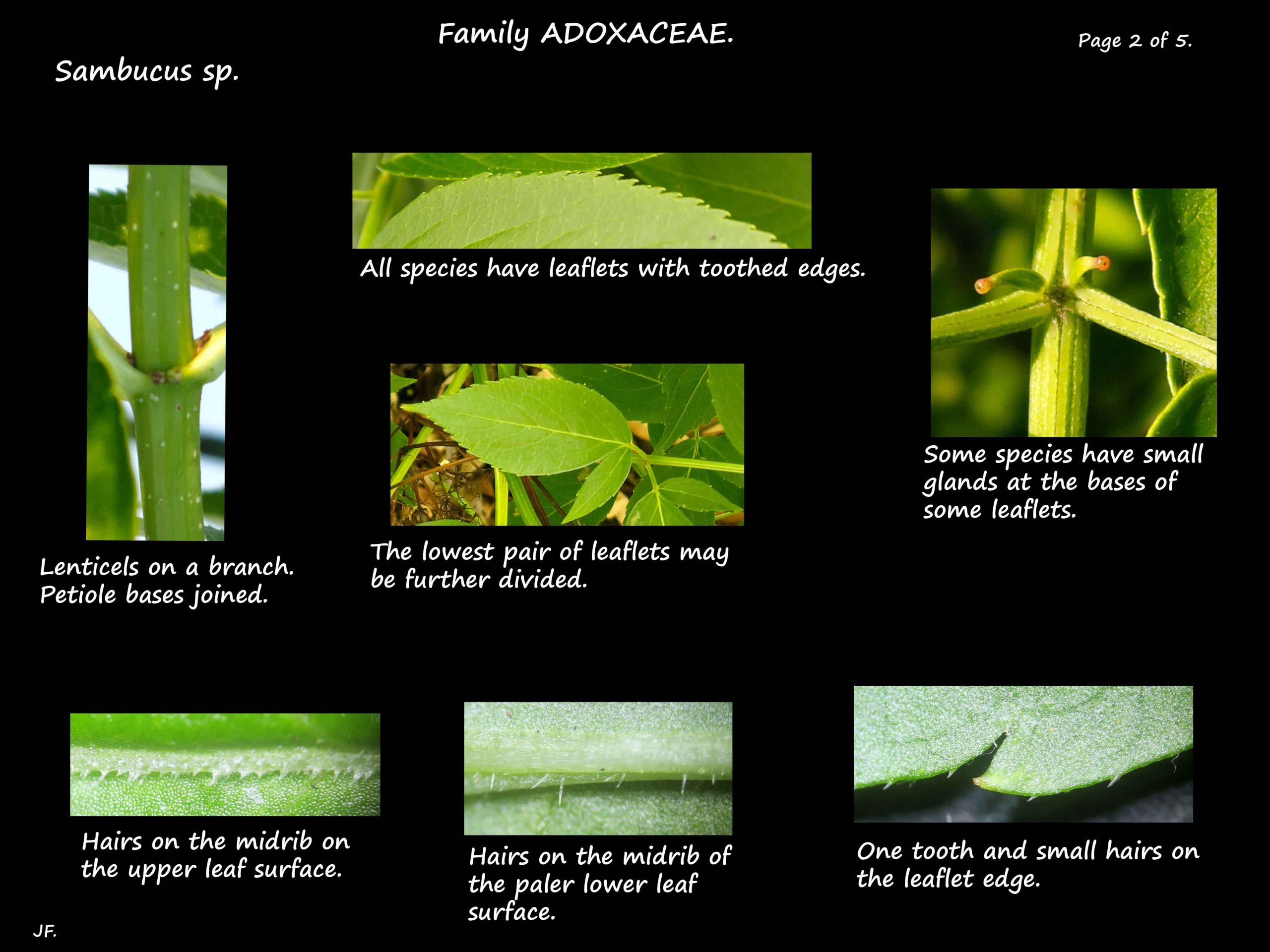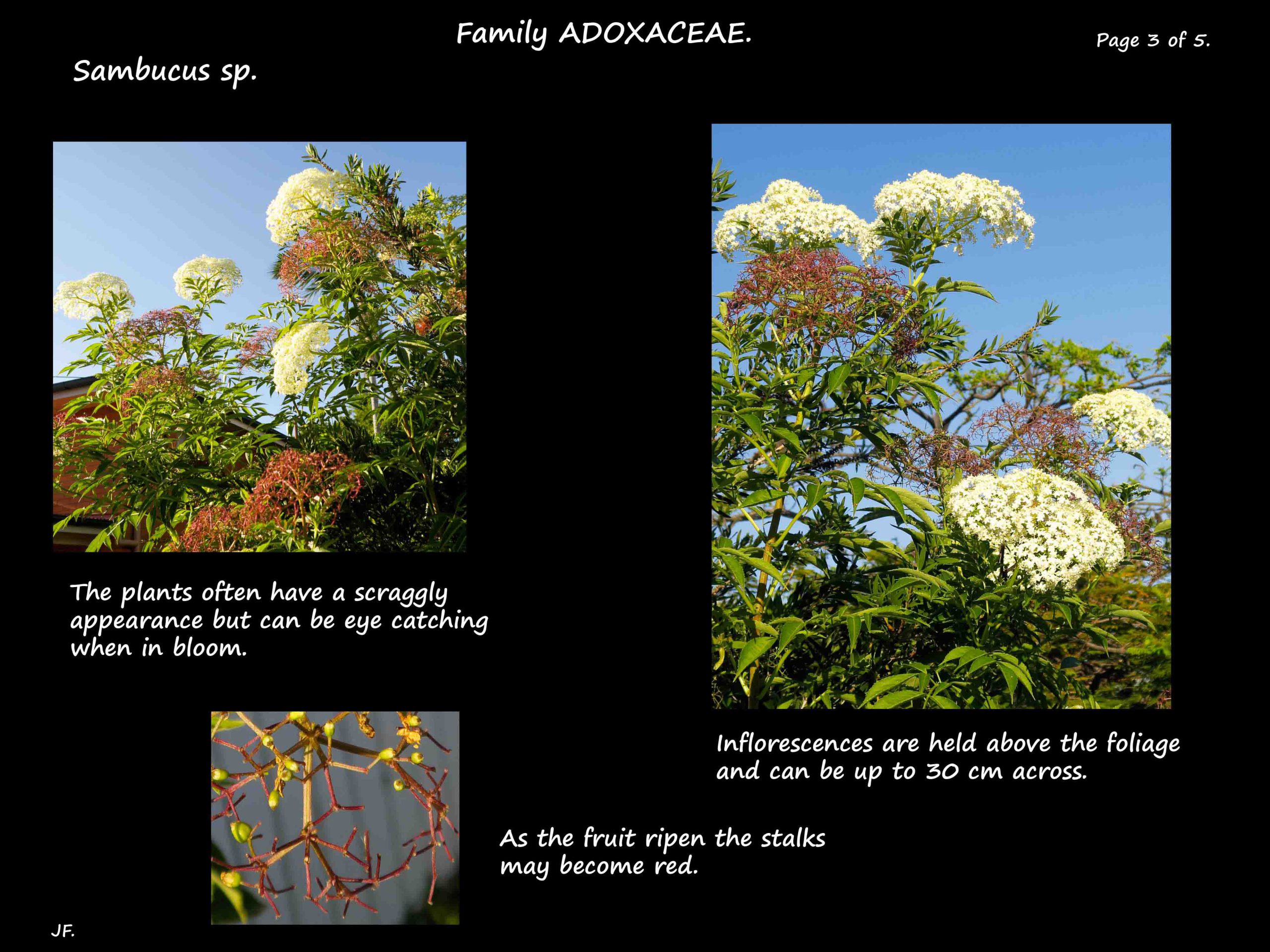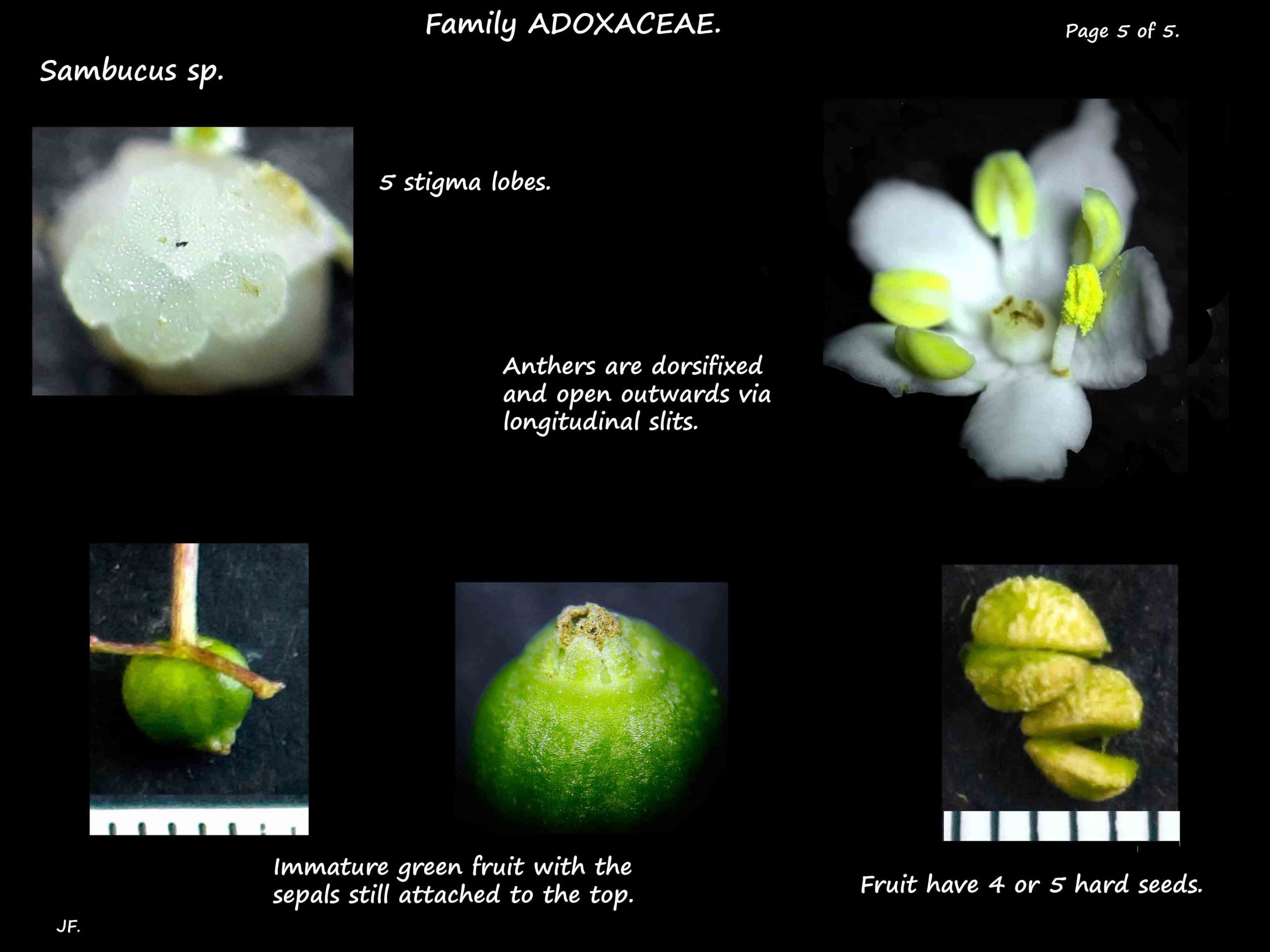Sambucus – Elderberry.
Clade Asterids > Order Dipsacales > Family Adoxaceae or Viburnaceae.
There are about 30 species of elders with some confusion in classifying and naming
the species and subspecies.
The Adoxaceae used to be included in the Caprifoliaceae family.
Most are multi-stemmed shrubs but some are a small tree up to 6 m high.
Branches have prominent small nodules or lenticels.
Leaves are oppositely arranged, up to 30 cm long and may or may not be deciduous.
The bases of opposing leaf stalks are usually joined by a ridge.
Leaves are once divided into 5 to 9 (11) leaflets but the lowest pair can be further divided.
Leaflets are ovate to elliptic with a rounded, sometimes asymmetric base and a pointed tip.
They are dark green, sometimes paler underneath and always have toothed edges.
There may or may not be hairs on the upper &/or lower surfaces especially on the veins.
Leaves may have small stalked glands on the midrib near the insertion of some leaflets.
Terminal inflorescences are held above the leaves.
They are much branched and usually with a flattish top but sometimes a round top.
They have many bisexual, small white or pale cream flowers.
Flower stalks are green but may become red or purplish when the fruit is ripening.
There may be small, 1 mm bracts.
Individual flowers are 5 – 6 mm across with parts in 3’s to 5’s.
Sepals are very small and may persist in the fruit.
The petals are fused at the base to form a short corolla tube.
The top of the tube has 3 to 5 spreading lobes.
The anthers are attached to the corolla tube and alternate with its lobes.
They are dorsifixed and dehisce outwards via longitudinal slits.
The ovary is wholly or partly inferior with 3 to 5 locules.
There are 3 to 5 stigmas, with or without a short style.
Fruit, in large clusters, are frequently called berries.
They are actually drupes with a hard coat around the seed.
They are roughly globose and dark purple, black, red, white or yellow.
J.F.





